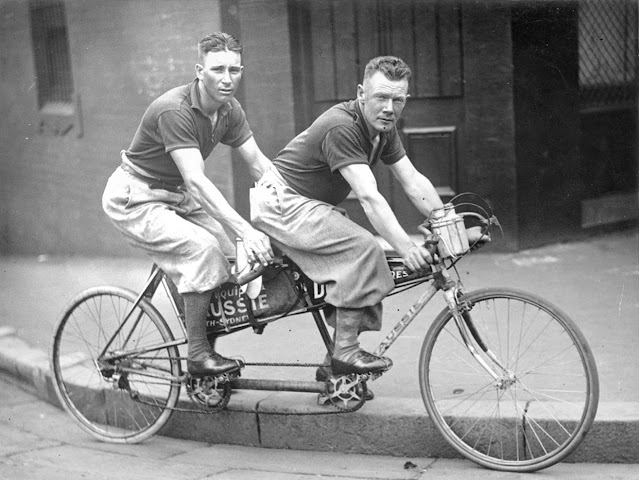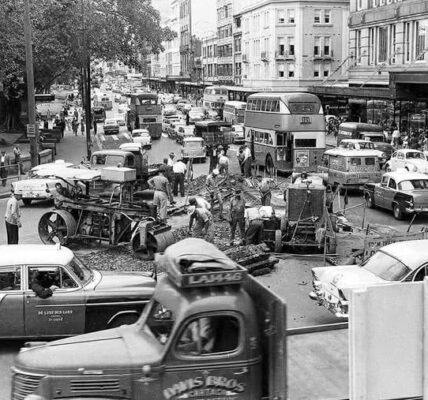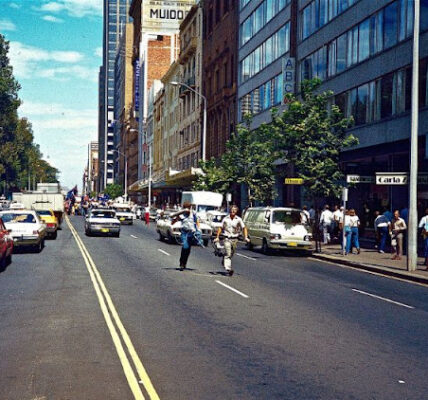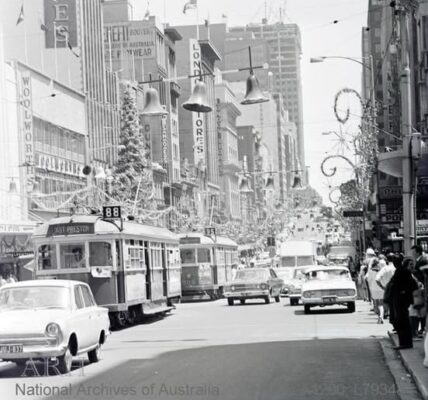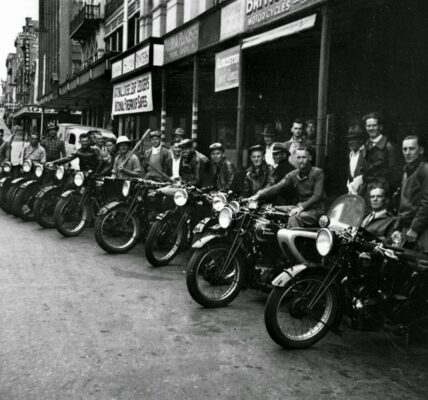On November 4, 1933, William “Billy” Read and Gordon Jones, members of the Bassendean Midland Cycling Club, left the Perth G.P.O. in Forrest Place Perth, in an attempt to ride to Sydney in under 23 days. The solo record at that time was held by another West Australian, Vic Waltham, who had ridden from Sydney to Peith in 26 days 3 hours 8 minutes in 1927.

|
| Jones (left) and Read on their Aussie tandem. (Photo by Sam Hood, via State Library of New South Wales) |
The tandem was steered by Read, aged 31 years. He was short and sturdily built and had been a racing cyclist for 17 years. Jones, aged 22 years was taller and lighter than Read and had raced as a West Australian junior. The men had trained for five months, cycling 640 km a week. Their daily average distance had to exceed 190 km a day, a grueling task in view of the unsealed and corrugated roads of those days, and the very rough track between Coolgardie and Adelaide.
Their machine, an Aussie tandem was fitted with the “latest and greatest labor saving device”, a 3 speed Cyclo variable gear, internal brakes and Dunlop Perdriau tires. A tank to hold 9 liters of water was fitted between the frames of the machine. There were no backup vehicles as today’s riders enjoy; between towns they were dependent on their own resources and had to carry all they needed.
Read and Jones were given an enthusiastic send-off by a large crowd. Their cycle was brightly painted and they wore green and gold guernseys, plus-fours riding breeches and white fisher hats. The first three stages were to Cunderdin, Southern Cross and Coolgardie. By November 8, they had reached Balladonia after 15 hours of hard riding through heavy sand and against strong head winds. From Balladonia, the cycle was fully loaded for the crossing of the Nullarbor. The water tank was filled as well as four detachable water flasks. Although they had arranged for food supplies to be left at some stations on the Nullarbor, they carried tinned provisions and a blanket, the necessary spares and a minimum of personal items. The tires had to bear a weight of over 190 kg on very rough roads.
Advertisement
There was no made road across the Nullarbor and at one stage they spent two days wheeling their cycle through heavy sand. Another section was pitted with camel tracks; sometimes the country was overgrown with brush and near the Madura Pass the jagged edge of limestone had been exposed by strong winds. One day they had 12 punctures in 26 km and finished up walking to the next station. In addition, they battled head winds and hot weather. Also near Madura in WA, they attracted the attention of a herd of wild steers. Read later commented that was when they easily registered their fastest burst of speed for the whole trip and just managed to out-distance the herd.
The riders sustained a bad fall approaching Iron Knob in SA. They were descending a hill when the wheel was caught in a rut and they were thrown over the handlebars. Read had numerous abrasions and a badly sprained shoulder, Jones escaped with slight abrasions.
Undaunted, they remounted the cycle and carried on. After leaving Port Augusta, they suffered a blowout due to the great weight on the tires and had to walk 24 km to the next town. Going to bed at midnight, they were up and on their way at 4am covering the remaining 290 km to Adelaide by dark – the journey so far had taken 14 days.
Advertisement
One would have thought that their worries were over but after leaving Adelaide, they encountered heavy rain and further strong head winds which slowed them to an average 11 km/h causing them to fall behind schedule.
Reporting when 160 km out of Melbourne, Read said that they were both very saddle sore and could only ride short distances. In spite of this, once free of the head winds they made good time and when 26 km out of Melbourne they were met by the Australian champion cyclist, Hubert Opperman, who rode with them the remaining distance to the Malvern Star Agency in Elizabeth Street. They were welcomed there by many people prominent in cycling circles but there was no time for self congratulation, they stopped only for a light lunch and started off again on the last leg of the journey to Sydney. From there on, the conditions were vastly improved and Read and Jones made good time, averaging 32 km/h. For the whole trip they had averaged five punctures a day and, except for replacing tires and a few spokes, the Aussie tandem had come through unscathed.
Their arrival in Sydney was reported by the Guardian, Nov 27, 1933.
“Sunburnt and with their equipment spattered with the mud and dust of four states, William Reid (sic) and Gordon Jones of Western Australia, rode their gaily coloured tandem bicycle to the General Post Office at 9am today, and signed a time-sheet which showed that they had ridden 3,003 miles across Australia in 22 days, 17 hours.”
After returning to WA, Read, who had played a leading role in the Bassendean-Midland Cycling Club, became its first life member. He died some years ago.
Gordon Jones, after working for WA Govt. Railways and then manager and part owner of Moondah at Gingin, retired to the metropolitan area becoming an active sportsman, playing bowls with the Bedford Bowling Club. He died in 2013 aged 102 years.
